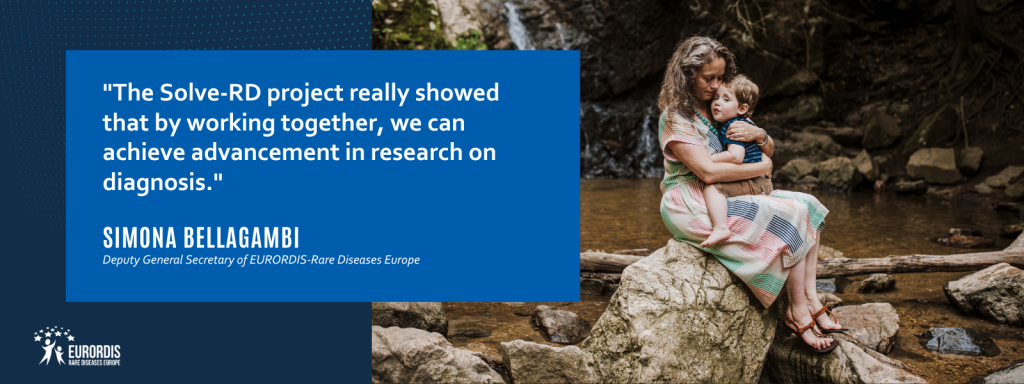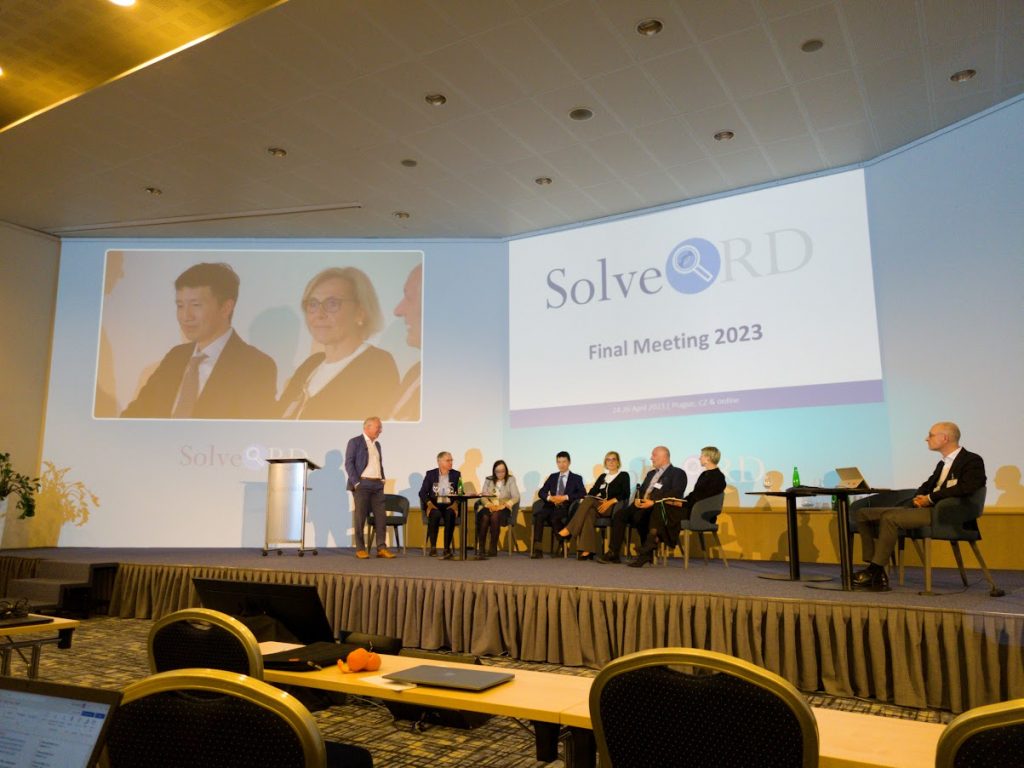EURORDIS involvement in solving the unsolved rare diseases
April 2023
Launched in 2018, the Solve-RD project, funded by the European Commission for five years, kicked off with ambitious goals set out by the International Rare Diseases Research Consortium to deliver diagnostic tests for most rare diseases by 2020. With the project coming to an end, we are looking back at EURORDIS’ role in the project and the importance of patient engagement, but also looking ahead – and the future of rare disease diagnostics, with Gulcin Gumus, Research and Policy Project Senior Manager at EURORDIS and Simona Bellagambi, Deputy General Secretary of EURORDIS.
A diagnosis can serve as the key to unlocking access to appropriate medical and social care, as well as treatment. However, obtaining a diagnosis can be a long and difficult journey. Some people live their entire lives with an undiagnosed condition. There can be different reasons why patients are undiagnosed, depending on the various reasons for difficulties in determining a diagnosis.
The undiagnosed population involves two different groups of undiagnosed patients: the not yet diagnosed and the undiagnosed. The first population refers to patients whose disease has not been diagnosed because the patient has not been referred to the appropriate clinician due to common, misleading symptoms, or an unusual clinical presentation of a known rare condition. The latter refers to the population of those with a disease for which a diagnostic test is not yet available; the disease has not been characterised and the cause is not yet identified.
Without a specific diagnosis, people with undiagnosed diseases face different challenges, such as a lack of access to social and financial support, medical treatment, and difficulty planning for the future.
The Solve-RD project has brought more than 300 leading clinicians, scientists, and patient representatives from 51 sites across 15 European countries, who have worked together over the past five years to solve unsolved rare diseases of which a molecular cause is not yet known.
How has the project succeeded in delivering this?
Gulcin: To date, the Solve-RD project has analysed 22,035 datasets from 6000 families, and has already solved 511 rare disease cases for which a molecular cause was not previously known. This has only been possible thanks to the collaboration efforts among different stakeholders, all bringing their competences and skills together to create an innovative clinical research environment that has put in place new ways of organising expertise and data.
What are the main challenges in advancing rare disease research on diagnosis, and what role has the patient community played in advancing it?
Simona: The main challenge in advancing rare disease research on diagnosis is the fragmentation of data and competences across clinical and research specialists, as well as countries. There is also a great lack of collaboration and funding. The Community Engagement Task Force (CETF), led by EURORDIS, created a united and engaged multi-stakeholder community of patients, scientists, clinicians, and genetic counsellors committed to improving the diagnosis and care of ultra-rare diseases and supporting the needs of the undiagnosed community. The Solve-RD project really showed that by working together, we can achieve advancement in research on diagnosis.

The importance of patient partnership in rare disease research
Patient engagement in rare disease research is crucial to ensure that the research conducted reflects and meets the needs and preferences of rare disease patients. Involving patients from early stages provides a unique insight not only into the condition being studied, but also into the personal experience of living with a rare disease. Results from a Rare Barometer survey on the future of rare diseases show that people living with a rare disease are very willing to be proactively involved in the research process. Yet, only 18% of people living with rare diseases have participated in research to develop new treatments and therapies.
Through the CETF, EURORDIS has ensured appropriate patient engagement in the project. The CETF has identified areas of need and facilitated the engagement of stakeholders within, and across, initiatives and networks in the field of diagnosis at European and international levels.
Can you give a concrete example of the work that has been done?
Gulcin: The CETF has created an infographic outlining the diagnostic odyssey that is translated into 24 languages. The infographic demonstrates the diagnostic odyssey many people experience on a daily basis. It also includes existing resources from CETF member organisations to support patients on this journey. It can be used for both national and local advocacy purposes.
EURORDIS has also contributed to supporting patient involvement in the project by developing a training on Scientific Innovation & Translational Research in order to deepen patient representatives’ understanding of how pre-clinical research translates into real benefits for rare disease patients. So far, EURORDIS Open Academy School on Scientific Innovation & Translational Research has trained 135 patient representatives.
The way forward
With the project coming to an end, a public symposium was arranged earlier this week to discuss the future of rare disease diagnostics, and concrete solutions on national, local, European and global levels.

Looking forward, what would your message be to policymakers about the importance of early diagnoses for people living with a rare disease?
Simona: We need a continuation of funding and collaboration beyond the end of the project. Coherent national programs are needed to ensure clear referral pathways to specific identified Centres of Expertise within the national network with multidisciplinary approaches, and laboratories with new diagnostic techniques. The collected data should feed existing EU platforms in order to allow for sharing data, increasing knowledge and improving diagnostic rates.
There is a clear need for Europe to take action to fund projects related to research on rare disease diagnostics, including ultra rare diseases. Patients and families should be involved throughout the research process and included as important partners, potentially leading to mutual benefits for both researchers and patients.
Contact
Andrea Osvoll
Communications Manager, Projects & Programmes
